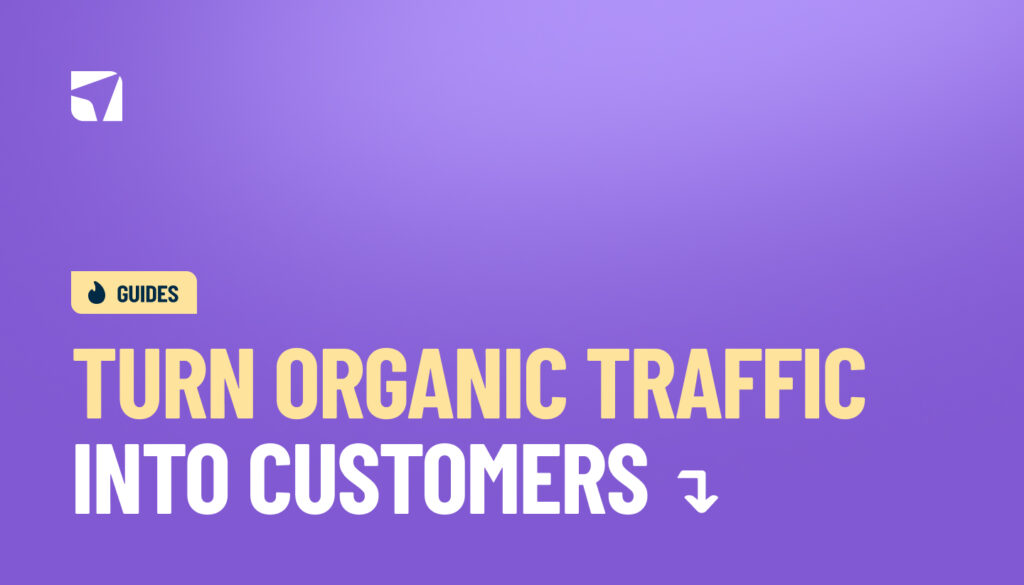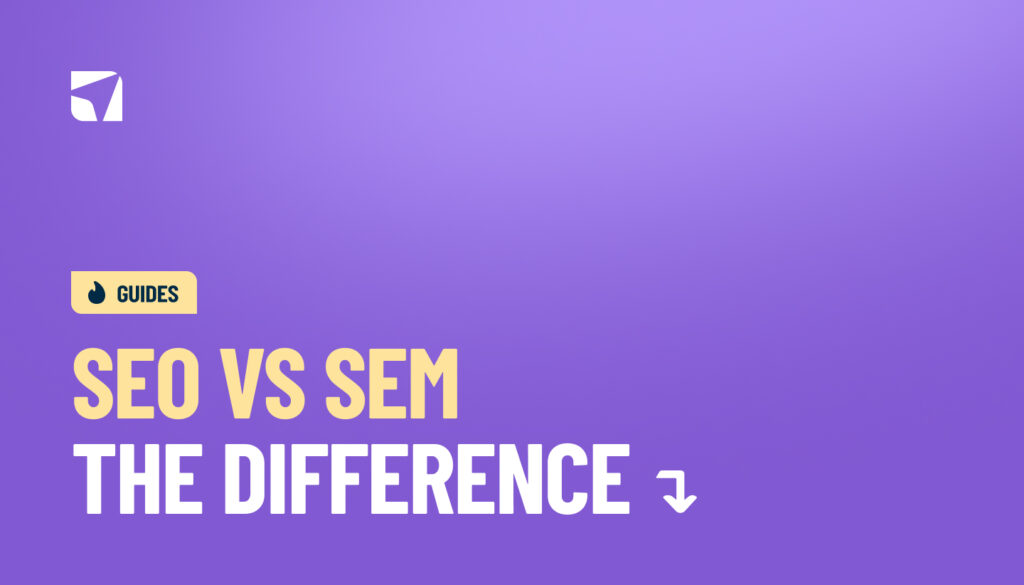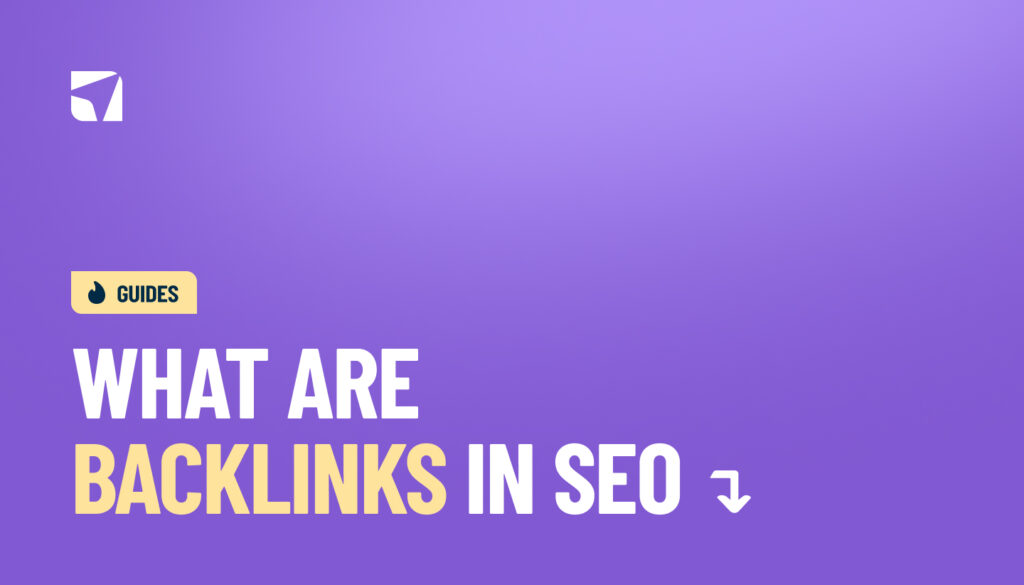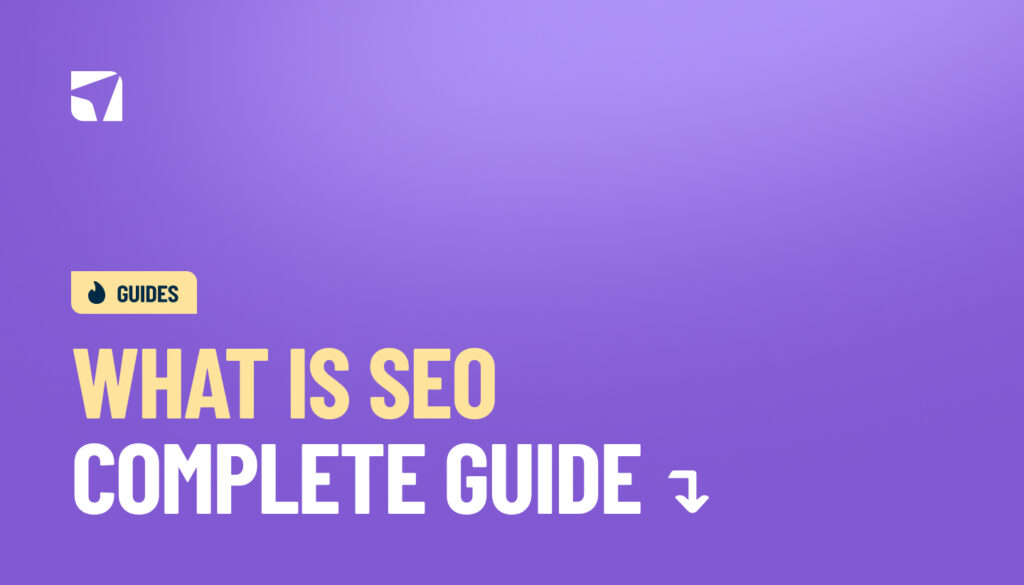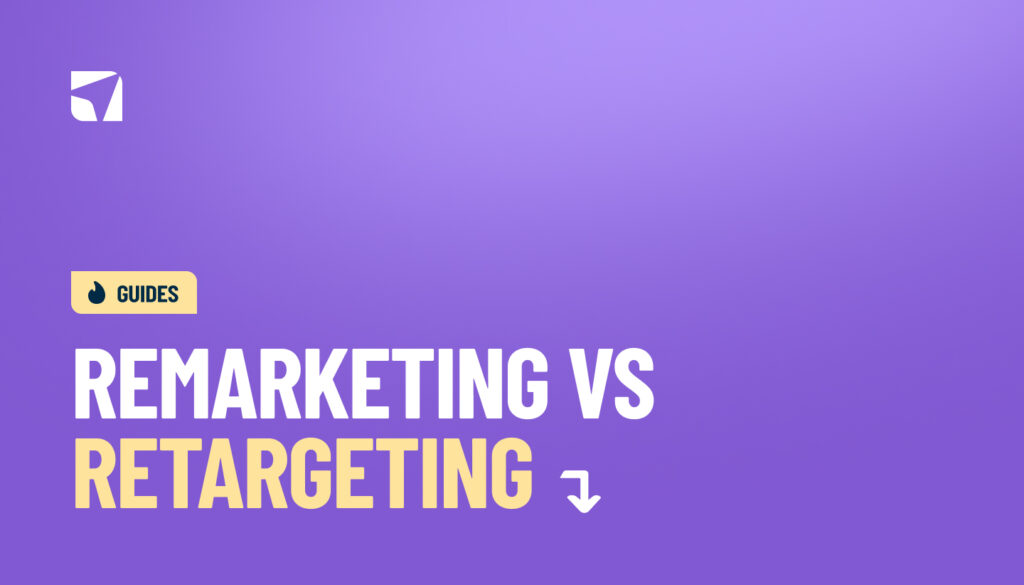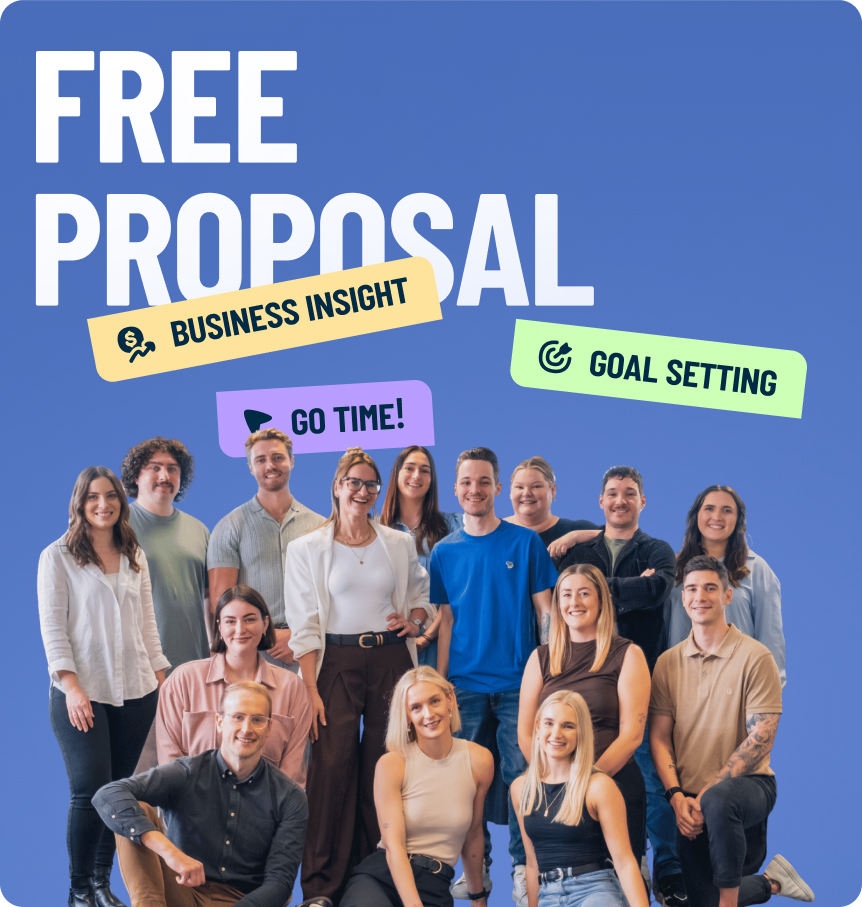Almost all website visitors aren’t ready to buy right away.
SEO-driven lead generation helps you build connections with potential customers at the start of their buying experience.
You can establish trust and relationships before they decide to purchase.
Smart SEO strategies create a natural flow that converts organic site traffic into qualified leads. Your visitors begin their relationship with your brand by sharing their information and choosing to stay connected with your business.
Lead generation marketing requires more than just getting traffic – it needs the right visitors.
Proper lead generation SEO techniques boost your search visibility and bring targeted organic traffic. Modern marketers customise their approach across multiple marketing channels. Websites and social media marketing play a crucial role in this mix.
This piece will show you tested digital marketing strategies that turn your SEO work into a reliable source of qualified leads for your business.
From Visitors to Leads: Understanding the Journey
Getting website visitors to become valuable leads isn’t easy. You need to hit several key points along the way.
The secret lies in knowing why most people leave without taking action and what makes others stick around. Session cookies can help track short-term behaviour during a visit.
What makes a visitor become a lead
The first step to converting visitors is knowing what makes someone a lead. A lead happens when someone takes action. Usually, by filling out a form, signing up for something, or showing they want to hear more from you.
You must know your target audience well. Good lead generation starts with market research and looking at who your visitors are. This includes their age, gender, education, location, lifestyle, and personality. This helps you create content that appeals to potential leads.
Great offers bridge the gap between browsing and real interest. Lead magnets like ebooks, checklists, discount codes, or free tools give people real reasons to share their details.
Clear calls-to-action guide people toward converting. The best CTAs stand out visually, sit in the right spots, and tell visitors exactly what they’ll get.
Trust builders boost lead generation success rates. Adding customer reviews, testimonials, and trust badges can lift your numbers.
Smart tools can catch visitors before they leave. Exit popups, chat windows, and quick responses can turn leaving visitors into leads. Exit popups that offer real value can multiply your lead generation by five times.
Aligning SEO with User Intent
SEO-driven lead generation success depends on a simple truth: you need to know what your potential customers want. Search intent shapes your content strategy and helps you connect with prospects right when they need you most.
Types of search intent
Search intent shows why people type specific words into search engines. People search differently, but most queries fit into four main groups:
- Navigational intent: These users know their destination. They search to find specific websites or pages and often include brand names. Someone typing “Adobe tutorial” wants to reach Adobe’s site rather than browse different options.
- Informational intent: These users want answers. They have questions about topics and look for clear explanations. Their searches start with “how to,” “what is,” or “why.” This type of search happens most during the early awareness stage.
- Commercial intent: These searches show someone researching before making a choice. Users read reviews and check different options. These searches use words like “best,” “top,” “compare,” or “reviews.”
- Transactional intent: These users are ready to act. They want to buy something, sign up for services, or download resources. Their searches include words like “buy,” “discount,” “pricing,” or “deals.”
Knowing these intent types helps you create better lead generation strategies that match what prospects need. All the same, real-life searches often mix different intents or change faster between them.
Mapping content to the buyer journey
Search intent and the buyer’s journey work together.
Your potential customers’ search behaviour changes as they move from awareness to decision-making. The quickest way to generate leads is by creating content that fits each stage.
Top-funnel prospects face a problem, but might not know your solution exists. They seek to learn more about their challenges. Your content should teach them through blog posts and guides that explain problems and solutions without pushing products.
Middle-funnel prospects understand their problem and research possible fixes. They show more commercial intent and compare different approaches. Your best content here includes case studies, comparison guides, expert webinars, and detailed articles that show how your solution fits among other options.
Bottom-funnel prospects are close to deciding. They show clear buying intent as they check specific providers. Your content should focus on converting them through product comparisons, customer stories, free trials, demos, and ROI calculators that build confidence.
This natural match between intent and journey makes it easier for visitors to become leads. Content that gives prospects what they want at each stage removes barriers and builds trust.
The result? More qualified leads from your organic traffic.
Building a Lead-Ready SEO Content Strategy
A strategic content foundation can transform your SEO efforts into a lead generation powerhouse.
Lead generation SEO needs a well-thought-out approach to attract and convert qualified prospects during their decision-making process, unlike generic content marketing.
Choosing the right topics and formats
Quality lead generation through content begins when you select topics that address your audience’s needs directly.
Your first step should be detailed keyword research to identify valuable opportunities that drive quality traffic to your website. Consistent and ongoing keyword research means that your content stays aligned with evolving search and algorithm changes.
The focus should be on finding keywords that reflect your audience’s pain points and the solutions they seek.
High-performing lead generation content typically falls into several distinct categories:
- Problem-solution content: Articles that diagnose common challenges your audience faces and present your approach as the answer
- Comparison pieces: Content that reviews options and helps buyers make confident decisions
- Alternative-focused pages: Resources that capture searches for competitors while highlighting your unique strengths
- Transparent pricing and reviews: Information that speaks directly to late-stage buying intent
Topic selection matters as much as content format. Different formats serve specific purposes in your lead generation funnel:
Blog posts build expertise and create initial awareness. Case studies show the real-life application of your solutions.
Interactive content such as webinars, product demos, and free trials converts exceptionally well because they provide value in exchange for contact details.
Balancing TOFU, MOFU, and BOFU content
Lead generation strategy works best with content that speaks to all stages of the buyer’s trip. This approach creates a strategic balance between Top of Funnel (TOFU), Middle of Funnel (MOFU), and Bottom of Funnel (BOFU) content.
TOFU content creates visibility and builds awareness. These high to mid-traffic informational pieces introduce your brand to potential customers who have just realised they have a problem or need. Educational blog posts, infographics, and videos showcasing industry insights work well at this stage to establish your presence without pushing for immediate conversion.
MOFU content helps prospects who actively research solutions. These prospects understand their challenges and weigh different options. Long-tail informational keywords power this content, which has substantial resources like ebooks, white papers, checklists, and free email guides. Your brand should emerge as a reliable resource while showcasing your unique value proposition.
BOFU content converts prospects who are ready to decide. These mid to low-traffic keywords might bring less volume, but the traffic converts better. Webinars, product demos, free trials, and detailed sales materials provide the final push toward conversion at this stage.
Your lead-ready SEO content strategy should look beyond traffic metrics. Create content that nurtures prospects through each stage of their trip and transforms organic visitors into qualified leads for your business.
Optimising Your Website for Lead Generation
An effective website design forms the base of your lead generation SEO efforts. The most strategic content won’t turn visitors into leads if your site blocks conversion through poor performance or confusing design.
Technical aspects of web design and user experience elements must work together to create a natural path from finding your site to conversion.
Improving page speed and mobile usability
Page loading speed directly affects your lead generation potential, especially on mobile devices. Companies with substantial daily revenue could lose millions in annual sales from just a one-second delay in page loading.
You can boost site speed by optimising images with proper formatting and compression.
Photos work best as JPEG files, while graphics with fewer colours or transparent backgrounds should be PNG. TinyPNG and ImageOptim help compress images without losing quality. The right image size matters – don’t rely on HTML or CSS to resize them.
Core Web Vitals optimisation should be your priority since these metrics affect user experience and search rankings. Focus on three key measurements:
- Largest Contentful Paint: how fast your page’s main content loads
- First Input Delay: how quickly your page responds to user interaction
- Cumulative Layout Shift: how stable your page stays during loading
Test your site on multiple devices to make sure forms, buttons, and CTAs work well on smaller screens.
Designing clear CTAs and lead forms
CTAs are vital conversion points in your lead generation process. Make them stand out through smart placement and design. Put your main CTA where users see it without scrolling. Engagement peaks in this area.
Visual elements help catch attention. Choose colours that pop against your background and other elements. Add white space around buttons to make them visible. Button shapes matter too: rounded corners catch the eye while square buttons show authority.
Your CTA text needs to explain what happens next. Skip generic phrases like “Submit” or “Learn More.” Instead, use action words that tell users exactly what they’ll get: “Get Your Free Proposal” or “Start Your Free Trial”. Clear language removes doubt and gets more clicks.
Mobile users prefer less typing. Add dropdown menus, checkboxes, and autocomplete features. Smart forms can show or hide fields based on previous answers, which creates individual-specific experiences.
Trust matters during conversion. Add privacy policy highlights near forms to reassure visitors about their data, including the use of advertising cookies. Keep the privacy link visible but not distracting from the main CTA.
These technical and design improvements turn your website from an information source into a powerful lead generation tool that naturally guides visitors toward becoming valuable business leads.
Tools and Tactics to Capture SEO Leads
Converting organic traffic into qualified leads needs specific tools that capture visitor details at the right moment. Your website can become a lead generation powerhouse when you implement these tools strategically.
Using popups, forms, and live chat bots
Popups remain remarkably effective for lead generation, despite their sometimes controversial reputation.
Success comes from thoughtful implementation rather than aggressive interruption.
Effective popups need these best practices:
- Create visually attractive designs that match your brand
- Give clear exit options, especially on mobile devices
- Test different pages and designs to boost performance
- a on every page
- Make a mobile-friendly implementation with easy exit options
Your pop-up’s timing plays a significant role in conversion success. Rather than showing popups right away, you could try these trigger methods: adding a delay, displaying popups on the second page viewed, using scroll triggers, or adding exit-intent technology that activates when visitors try to leave your site.
Live chat bots offer another powerful way to capture SEO leads. AI chatbots provide dynamic, real-time interaction with website visitors, unlike static forms. They answer questions and collect valuable information while guiding potential customers through your sales funnel.
Integrating lead gen tools with your CMS
Your lead generation tools must work together in a cohesive system to maximise results.
A seamless lead capture process emerges from connecting your content management system (CMS), customer relationship management (CRM) software, and marketing automation capabilities.
This smart system captures data effectively when your published content matches CRM actions.
A visitor reading several articles on a specific topic might trigger a relevant nurturing flow automatically. Similarly, downloading high-value content updates their lead scoring and alerts your sales team.
CRM and CMS platforms typically offer ways to communicate with each other.
This connected ecosystem enables personalised communication flows that match each contact’s behaviour and profile when combined with marketing automation. HubSpot’s fully integrated solutions streamline processes and reduce manual work in managing customer data.
These integrated tools working together boost operational efficiency and conversion rates. The result is a continuous customer journey management system that maintains information flow between departments.
Tracking, Testing, and Improving Results
Successful lead generation SEO relies on measuring results that help track performance and refine your approach. Your content, website, and capture tools need proper analytics after deployment to make evidence-based improvements.
Setting up goals in Google Analytics
Google Analytics offers powerful tools that monitor how well your lead generation efforts turn visitors into prospects.
Google Search Console is an effective platform for tracking the performance metrics of organic search.
Combining this with insights from advertising cookies allows you to understand user behaviour more deeply and refine retargeting efforts.
Destination goals work best to track lead generation. These goals trigger when visitors reach specific pages after completing desired actions. Usually, thank-you pages appear after form submissions. This gives clear proof that a conversion happened.
Here’s how to set up destination goals:
- Go to Admin > View > Goals
- Pick “New Goal” and choose “Custom”
- Give your goal a clear name (e.g., “Contact Form Submission”)
- Add the thank-you page URL that shows after form completion
- Add a monetary value if you know each lead’s worth
Goal funnels offer more detailed tracking to see how users move through your conversion path. This shows exactly where potential leads leave, which reveals areas you can improve.
A/B testing landing pages and CTAs
Behaviour makes a shared comparison of different page versions possible to see which one generates more leads. This approach removes guesswork and gives solid proof of what drives conversions.
Start by testing elements that directly shape user behaviour:
- Headlines that grab attention
- CTA button colours, text, and placement
- Form length and required fields
- Page layouts and visual hierarchy
The ICE framework (Impact, Confidence, Ease) helps you decide which tests to run first. Each potential change gets a score based on expected impact, hypothesis confidence, and how easy it is to implement.
Good results come from testing one variable at a time until you reach statistical significance. Multiple simultaneous changes make it hard to know which one made the difference.
Using heatmaps to understand behaviour
Heatmaps show visual patterns of how visitors use your pages in ways that numbers alone cannot reveal. These tools track clicks, scrolling, and mouse movements to pinpoint where attention focuses or fades.
Click maps show the most frequent click spots, which helps place CTAs better and find non-interactive elements that users try to click. Scroll maps reveal how far visitors read down your page and whether they see important conversion elements.
Heatmap data guides strategic improvements:
- Move CTAs to high-engagement areas
- Remove distracting elements that steal attention
- Change content layout based on scroll patterns
- Put key information where most visitors will see it
Goal tracking, A/B testing, and heatmap analysis work together as a complete system. This combination helps you make evidence-based improvements to your lead generation SEO performance.
To Summarise...
Lead generation SEO turns organic traffic into qualified leads by combining strong website performance, user-focused content, and smart conversion tools. Addressing user intent across all funnel stages, supported by CTAs, forms, and chatbots, boosts engagement. Ongoing testing and analytics through Google Search Console and Analytics ensure strategies evolve, building trust and driving long-term business growth.
Here at Digital Nomads HQ, we offer comprehensive SEO services that aim to optimise your website to its fullest potential. Don’t hesitate to reach out to our team of SEO specialists today to get started on your campaign.
FAQs
How can I effectively convert organic traffic into leads?
Convert traffic into leads by creating value-driven content, optimising with long-tail keywords, and adding strategic CTAs. Use in-session marketing and build website authority to encourage engagement.
What are the key components of a successful lead generation strategy?
A strong lead generation strategy includes Lead Capture, Lead Magnets, Landing Page Conversion, and Lead Scoring, working together to attract, engage, and qualify leads.
What are some effective tactics for generating leads organically?
Generate leads by identifying your audience, investing in SEO and smart keyword research, creating quality content, and leveraging social media, email, and interactive engagement.
How important is understanding user intent in lead generation SEO?
Understanding user intent is vital. Aligning content with prospect needs at each stage naturally guides them toward conversion, from awareness to decision-making.
What role do tools like popups and chatbots play in capturing SEO leads?
Popups boost subscriptions when timed well, while chatbots engage visitors in real time, answering questions and capturing valuable lead data.
